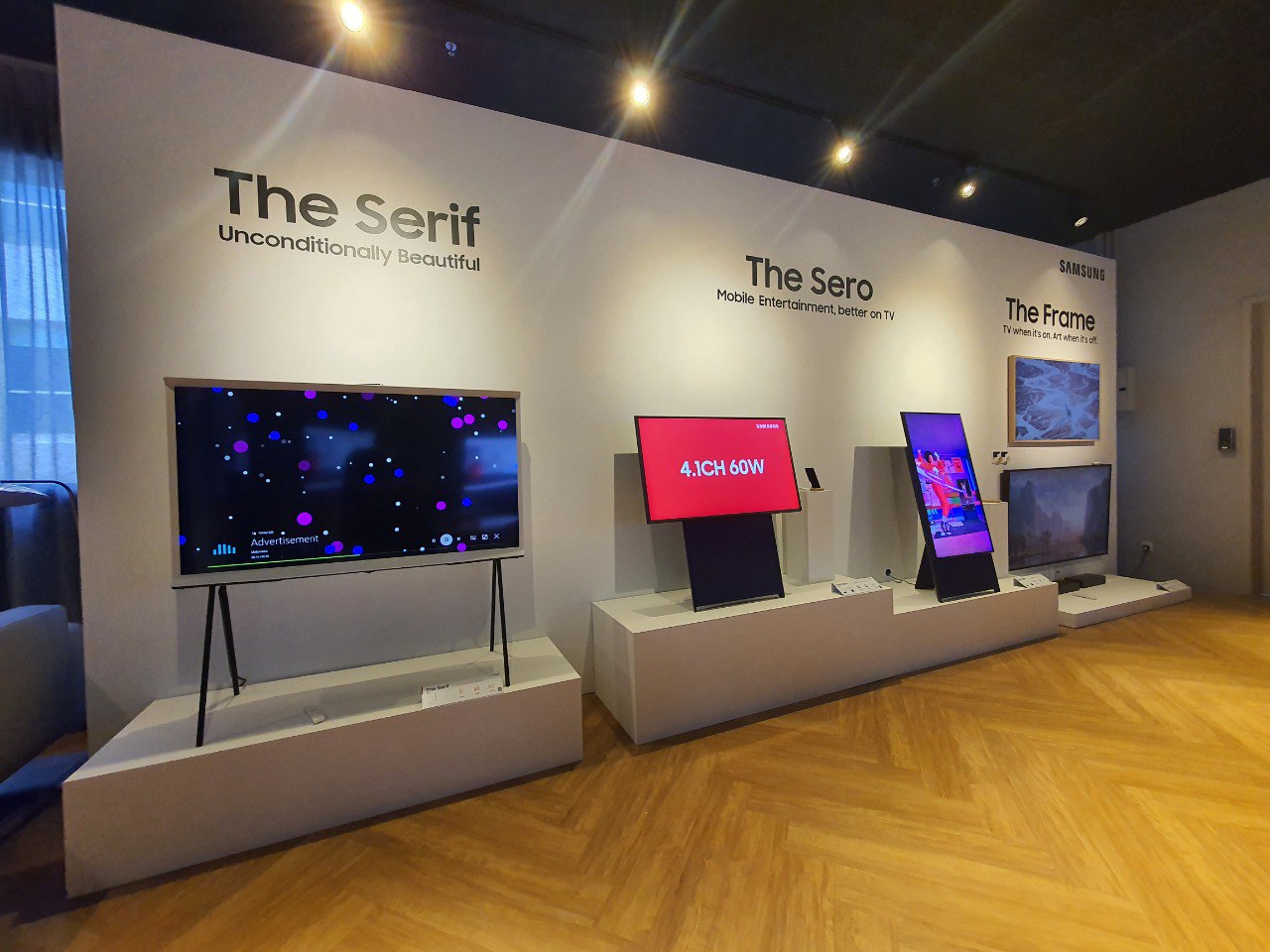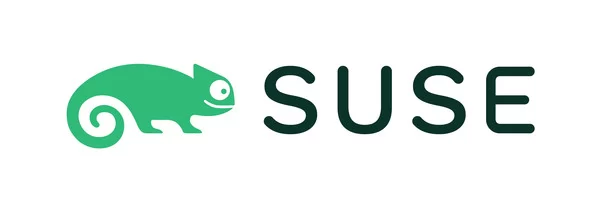Second quarter net revenues increased by 40.0% year-over-year
Second quarter GAAP/non-GAAP net margin were 6.6%/8.0% respectively
BEIJING, Sept. 8, 2020 — China Online Education Group ("51Talk" or the "Company") (NYSE:COE), a leading online education platform in China, with core expertise in English education, announced its unaudited financial results for the second quarter ended June 30, 2020.
Second Quarter 2020 Financial and Operating Highlights
- Net revenues were RMB493.5 million (US$69.8 million), a 40.0% increase from RMB352.6 million for the second quarter of 2019.
- Gross margin was 70.9%, compared with 69.5% for the second quarter of 2019.
- GAAP net income was RMB32.8 million, representing GAAP net margin of 6.6%, compared with GAAP net loss RMB33.2 million and GAAP net margin of negative 9.4% for the second quarter of 2019.
- Non-GAAP net income was RMB39.6million, representing non-GAAP net margin of 8.0% compared with non-GAAP net loss RMB27.6 million and non-GAAP net margin of negative 7.8% for the second quarter of 2019.
- Operating cash inflow was RMB172.1 million (US$24.4 million), compared with RMB99.2 million operating cash inflow for the second quarter of 2019.
- Cash, cash equivalents, time deposits and short-term investments balance reached RMB1,426.7 million (US$201.9 million) as of June 30, 2020.
- Gross billings[1] were RMB676.4 million (US$95.7 million), a 35.7% increase from RMB498.5 million for the second quarter of 2019, the highest year-over-year growth rate since the first quarter of 2018.
|
Key Financial and Operating Data
|
For the three months ended
|
|
|
|
Jun. 30,
|
|
Jun. 30,
|
|
Y-o-Y
|
|
2019
|
|
2020
|
|
Change
|
|
|
|
|
|
|
|
Net Revenues (in RMB millions)
|
352.6
|
|
493.5
|
|
40.0%
|
|
K-12 one-on-one mass market offering
|
259.6
|
|
417.9
|
|
61.0%
|
|
K-12 small class offering
|
33.1
|
|
28.5
|
|
(13.8%)
|
|
One-on-One others
|
59.9
|
|
47.0
|
|
(21.4%)
|
|
|
|
|
|
|
|
Gross billings (in RMB millions)
|
498.5
|
|
676.4
|
|
35.7%
|
|
K-12 one-on-one mass market offering
|
418.5
|
|
612.5
|
|
46.4%
|
|
K-12 small class offering
|
33.0
|
|
42.4
|
|
28.5%
|
|
One-on-One others
|
47.0
|
|
21.5
|
|
(54.3%)
|
|
|
|
|
|
|
|
Active students[2] (in thousands)
|
233.4
|
|
298.2
|
|
27.8%
|
|
|
|
|
|
|
|
|
[1] Gross billings for a specific period, which is one of the Company’s key operating data, is defined as the total amount of cash received for the sale of course packages and services in such period, net of the total amount of refunds in such period.
[2] An "active student" for a specified period refers to a student who booked at least one paid lesson, excluding those students who only attended paid live broadcasting lessons or trial lessons.
|
|
"We extended our outstanding performance by delivering another quarter of robust across-the-board results in the second quarter," said Mr. Jack Jiajia Huang, Founder, Chairman and Chief Executive Officer of 51Talk. "These results were fueled by the continued optimization of our K-12 one-on-one mass market strategy in non-tier-one cities[3] as well as the overall growing market awareness and acceptance of online education brought about by the effects of the COVID-19 pandemic. Financial highlights of the second quarter include our net revenues increasing 40.0% year-over-year to reach RMB493.5 million, a figure 5.0% above the high end of our guidance. Net revenues from our core K-12 one-on-one mass market offerings increased 61.0% year-over-year to reach RMB417.9 million. Furthermore, our gross billings reached RMB676.4 million, growing 35.7% year-over-year and recording the highest growth rate since the first quarter of 2018. Our K-12 one-on-one mass market gross billings grew 46.4% year-over-year to RMB612.5 million, accounting for 90.6% of our total gross billings.
"Operationally, our teams continued to execute well and capture market opportunities. We grew our number of second quarter active students by 27.8% year-over-year. To augment our K-12 offerings, we recently launched brand new Level-K courses for kindergarten students aged 3 to 5, aiming to broaden our student base and build good study habits from a young age through our platform. We also held tournaments for our flagship China Youth Talk speech contest between April and August. This high-profile event attracted more than 500,000 K-12 aged contestants from across the country and showcased the achievements among some of the most talented youth. In the second quarter we embarked on a brand uplift effort in the Philippines to further burnish our already strong appeal among existing and potential instructors. A highlight of this campaign is the appointment of Ms. Pia Wurtzbach, a former Miss Universe with strong popularity among our target instructor demographic, as our brand ambassador in the Philippines. With her appointment and our continuous promotion efforts, we further strengthened our leadership position in online education and effectively promoted teaching careers at 51Talk for Filipinos with high English proficiency, passion for teaching, and familiarity with the Chinese culture.
"Additionally, I am pleased to announce that on September 2, at the K-12 Online Education Service and Evaluation Standard conference, we presented the first-ever enterprise standards. The standards were also recently published through the Standard Platform of the Standardization Administration of China. During the conference, we signed the K-12 Online Education Industry Self-discipline Convention, together with representatives from six other companies. Through strengthened self-disciplinary actions, these companies strive to lead by example in areas such as curriculum creation, class duration, foreign teacher selection, and tuition prepayment, amongst several others. Furthermore, we, along with other business representatives, experts and scholars kicked off a process to establish an evolving and formal K-12 Online Education Service and Evaluation Standard. This would be an important step forward in the maturity of our industry and the standardization of the service scope and requirements for K-12 online education enterprises.
"In summary, we are proud of our second quarter achievements both financially and operationally. The firm’s organizational foundation built over the years, coupled with our sharp strategic focus in the K-12 one-on-one mass market in non-tier-one cities, has helped us emerge today in a stronger, better position. As we move into the second half of 2020, I look forward to continuing to execute on our mission, bringing our strong value proposition to the market and delivering long-term benefit to all our stakeholders," concluded Mr. Huang.
"I’m pleased to report another strong quarter marked by both continued top-line growth and robust profitability driven by our strategy to pursue healthy growth while keeping a close eye on operational efficiencies," said Mr. Min Xu, Chief Financial Officer of 51Talk. "During the second quarter, we achieved Non-GAAP net income of RMB39.6 million, as our net revenues and gross billings continued to expand. Excluding the RMB17.9 million favorable impact of government-related COVID-19 relief benefits received in the second quarter, our non-GAAP net profit margin would have been 4.4%, compared with a non-GAAP net margin of negative 7.8% for the second quarter of 2019. We are pleased to record operating cash inflow, a key metric of our financial health, of RMB172.1 million. Another highlight of the quarter was our successful follow-on public offering, which further strengthened our balance sheet and stimulated investor interest. I am confident that the Company is on the right track for continued growth and profitability."
|
[3] Tier-one cities include Beijing, Shanghai, Shenzhen, Guangzhou and Tianjin.
|
Second Quarter 2020 Financial Results
Net Revenues
Net revenues for the second quarter of 2020 were RMB493.5 million (US$69.8 million), a 40.0% increase from RMB352.6 million for the same quarter last year. The increase was primarily attributed to the increases in the number of active students and the average revenue per active student. The number of active students in the second quarter of 2020 was 298,200, a 27.8% increase from 233,400 for the same quarter last year. The average revenue per active student in the second quarter of 2020 increased by 9.5% year-over-year.
Net revenues from one-on-one offerings for the second quarter of 2020 were RMB464.9 million (US$65.8 million), a 45.5% increase from RMB319.5 million for the same quarter last year. Net revenues from small class offerings for the second quarter of 2020 were RMB28.5 million (US$4.0 million), a 13.8% decrease from RMB33.1 million for the same quarter last year.
Cost of Revenues
Cost of revenues for the second quarter of 2020 was RMB143.6 million (US$20.3 million), a 33.5% increase from RMB107.6 million for the same quarter last year. The increase was primarily driven by an increase in total service fees paid to teachers, mainly due to an increased number of paid lessons.
As part of Chinese government’s effort to ease the burden of businesses affected by the coronavirus (COVID-19) outbreak, the Ministry of Human Resources and Social Security, the Ministry of Finance and the State Taxation Administration temporarily reduced and exempted employer obligation on social security contributions from February 2020. The impact of coronavirus policies on cost of revenues was RMB0.4 million in the second quarter. Excluding the impact, total cost of revenues for the second quarter would have been RMB144.0 million (US$20.4 million), representing a 33.8% year-over-year increase.
Cost of revenues of one-on-one offerings for the second quarter of 2020 was RMB131.8 million (US$18.7 million), a 42.5% increase from RMB92.5 million for the same quarter last year. Cost of revenues of small class offering for the second quarter of 2020 was RMB11.7 million (US$1.7 million), a 22.1% decrease from RMB15.1 million for the same quarter last year.
Gross Profit and Gross Margin
Gross profit for the second quarter of 2020 was RMB349.9 million (US$49.5 million), a 42.8% increase from RMB245.0 million for the same quarter last year. Gross margin for the second quarter of 2020 was 70.9%, compared with 69.5% for the same quarter last year.
Excluding the positive impact of the coronavirus related exemption of employer obligation on social security contributions, gross profit and gross margin for the second quarter would have been RMB349.5 million (US$49.5 million) and 70.8% respectively.
Gross margin for one-on-one offerings in the second quarter of 2020 was 71.6%, compared with 71.1% for the same quarter last year. The increase was mainly attributable to a favorable mix of higher margin products. 51Talk’s small class offering gross margin for the second quarter of 2020 was 58.9%, compared with 54.5% for the second quarter of 2019. The increase was mainly due to a favorable mix of higher margin products.
Operating Expenses
Total operating expenses for the second quarter of 2020 were RMB332.4 million (US$47.1 million), an 18.7% increase from RMB280.1 million for the same quarter last year. The increase was the result of an increase in sales and marketing expenses and general and administrative expenses, partially offset by decreases of product development expenses.
Sales and marketing expenses for the second quarter of 2020 were RMB239.9 million (US$34.0 million), a 27.4% increase from RMB188.4 million for the same quarter last year. The increase was mainly due to higher marketing expenses and higher sales personnel costs related to increases in the number of sales and marketing personnel. Excluding share-based compensation expenses, non-GAAP sales and marketing expenses for the second quarter of 2020 were RMB237.4 million (US$33.6 million), a 26.8% increase from RMB187.3 million for the same quarter last year. Non-GAAP sales and marketing expenses, excluding branding expenses, were 30.7% of the gross billings for the second quarter of 2020, compared with 32.6 % for the same quarter last year. The impact of coronavirus policy related exemption of employer obligation on social security contributions on sales and marketing expense was RMB6.7 million in the second quarter. Excluding the impact, sales and marketing expenses for the second quarter would have been RMB246.6 million (US$34.9 million), representing a 30.9% year-over-year increase.
Product development expenses for the second quarter of 2020 were RMB38.6 million (US$5.5 million), a 6.6% decrease from RMB41.4 million for the same quarter last year. The decrease was primarily due to favorable COVID-19 policy related impact. Excluding share-based compensation expenses, non-GAAP product development expenses for the second quarter of 2020 were RMB37.0 million (US$5.2 million), a 7.0% decrease from RMB39.7 million for the same quarter last year. The impact of COVID-19 policy related exemption of employer obligation on social security contributions on product development expenses was RMB2.2 million in the second quarter. Excluding the impact, product development expenses for the second quarter would have been RMB40.8 million (US$5.8 million), representing a 1.4% year-over-year decrease.
General and administrative expenses for the second quarter of 2020 were RMB53.9 million (US$7.6 million), a 7.0% increase from RMB50.4 million for the same quarter last year. The increase was primarily due to the higher professional services fees in connection with the follow-on public offering. Excluding share-based compensation expenses, non-GAAP general and administrative expenses for the second quarter of 2020 were RMB51.1 million (US$7.2 million), a 7.7% increase from RMB47.5 million for the same quarter last year. The impact of coronavirus policy related exemption of employer obligation on social security contributions on general and administrative expenses was RMB1.6 million in the second quarter. Excluding the impact, general and administrative expenses for the second quarter would have been RMB55.5 million (US$7.9 million), representing a 10.1% year-over-year increase.
Other income
As part of Chinese government’s effort to ease the burden of businesses affected by the coronavirus (COVID-19) outbreak, the State Taxation Administration exempted a wide range of consumer services from value added tax (VAT) from January 2020. The income obtained by taxpayers from providing essential services shall be exempt from VAT. The favorable impact of coronavirus relief policies was RMB7.0 million in the second quarter.
On September 30, 2019, Ministry of Finance and the State Taxation Administration announced that from October 1, 2019 to December 31, 2021, the taxpayers engaging in the provision of essential services are allowed to deduct an extra 15% of the deductible input tax for the current period from the payable tax. The impact of the policy of additional value-added tax credit for the income generated by the essential services provided by enterprises was RMB2.6 million in the second quarter.
Income/(loss) from Operations
Operating income for the second quarter of 2020 was RMB27.1 million (US$3.8 million), compared with loss from operations of RMB35.1 million for the same quarter last year. Operating income margin for the second quarter was 5.5%, compared with operating margin of negative 9.9% for the same quarter last year.
Non-GAAP operating income for the second quarter of 2020 was RMB34.0 million (US$4.8 million), compared with non-GAAP loss from operations of RMB29.4 million for the same quarter last year. Non-GAAP operating income margin for the second quarter was 6.9%, compared with non-GAAP operating margin of negative 8.3% for the same quarter last year.
The total favorable impact of coronavirus relief policies was RMB17.9 million in the second quarter, including impact of coronavirus policy related exemption of employer obligation on social security contributions on income from operations of RMB10.9 million, in addition to coronavirus policy related VAT exemption of RMB7.0 million. Excluding the favorable impact, operating income and non-GAAP operating income for the second quarter would have been RMB9.2 million (US$1.3 million) and RMB16.1 million (US$2.3 million) respectively, representing 1.9% GAAP operating margin and 3.3% non-GAAP operating margin.
Net income/(loss)
Net income for the second quarter of 2020 was RMB32.8 million (US$4.6 million), compared with net loss of RMB33.2 million for the same quarter last year. Net margin for the second quarter was 6.6%, compared with net margin of negative 9.4% for the same quarter last year.
Non-GAAP net income for the second quarter of 2020 was RMB39.6 million (US$5.6 million), compared with non-GAAP loss of RMB27.6 million for the same quarter last year. Non-GAAP net margin for the second quarter was 8.0%, compared with non-GAAP net margin of negative 7.8% for the same quarter last year.
The favorable impact of coronavirus relief policies was RMB17.9 million in the second quarter. Excluding the favorable impact, net income and non-GAAP net income for the second quarter would have been RMB14.9 million (US$2.1 million) and RMB21.7 million (US$3.1 million), representing net margin of 3.0% and 4.4% respectively.
Basic net income per American depositary share ("ADS") attributable to ordinary shareholders for the second quarter of 2020 was RMB1.55 (US$0.22), compared with basic net loss per ADS of RMB1.62 for the same quarter last year. Diluted net income per ADS attributable to ordinary shareholders for the second quarter of 2020 was RMB1.44 (US$0.20), compared with diluted net loss per ADS of RMB1.62 for the same quarter last year. Each ADS represents 15 Class A ordinary shares.
Non-GAAP basic net income per ADS attributable to ordinary shareholders for the second quarter of 2020 was RMB1.87 (US$0.26), compared with non-GAAP basic net loss per ADS attributable to ordinary shareholders of RMB1.34 for the same quarter last year. Non-GAAP diluted net income per ADS attributable to ordinary shareholders for the second quarter of 2020 was RMB1.75 (US$0.25), compared with non-GAAP diluted net loss per ADS attributable to ordinary shareholders of RMB1.34 for the same quarter last year.
The favorable impact of coronavirus relief policies was RMB17.9 million in the second quarter. Excluding the favorable impact, basic net income per ADS attributable to ordinary shareholders for the second quarter of 2020 was RMB0.70 (US$0.10) and non-GAAP basic net income per ADS attributable to ordinary shareholders for the second quarter of 2020 was RMB1.03 (US$0.15).
Excluding the favorable impact, diluted net income per ADS attributable to ordinary shareholders for the second quarter of 2020 was RMB0.65 (US$0.09) and non-GAAP diluted net income per ADS attributable to ordinary shareholders for the second quarter of 2020 was RMB0.96 (US$0.14).
Balance Sheet
As of June 30, 2020, the Company had total cash, cash equivalents, time deposits and short-term investments of RMB1,426.7 million (US$201.9 million), compared with RMB1,053.4 million as of December 31, 2019.
The Company had advances from students[4] (current and non-current) of RMB2,411.8 million (US$341.4 million) as of June 30, 2020, compared with RMB2,186.6 million as of December 31, 2019.
|
[4] "Advances from students", which is defined as the amount of obligation to transfer good or service to students or business partners for which consideration has been received from students in advance. The deposits from students are also presented in the total amount of "advances from students".
|
Outlook
We cannot predict whether the incremental revenue boost from students spending more time at home amidst the COVID-19 outbreak will continue during the remainder of 2020. However, based on latest information available at the time of this release, for the third quarter of 2020, the Company currently expects net revenues to be between RMB525 million to RMB532 million, which would represent an increase of approximately 28.5% to 30.2% from RMB408.7 million for the same quarter last year;
The above outlook is based on the current market conditions and reflects the Company’s current and preliminary estimates of market and operating conditions and customer demand, which are all subject to change.
Conference Call
The Company’s management will host an earnings conference call at 8:00 AM U.S. Eastern Time on September 8, 2020 (8:00 PM Beijing/Hong Kong time on September 8, 2020).
Dial-in details for the earnings conference call are as follows:
|
United States (toll free):
|
1-866-264-5888
|
|
International:
|
1-412-317-5226
|
|
Mainland China:
|
400-120-1203
|
|
Hong Kong (toll free):
|
800-905-945
|
|
Hong Kong:
|
852-3018-4992
|
Participants should dial-in at least 15 minutes before the scheduled start time and ask to be connected to the call for "China Online Education Group."
Additionally, a live and archived webcast of the conference call will be available on the Company’s investor relations website at http://ir.51talk.com.
A replay of the conference call will be accessible until September 15, 2020, by dialing the following telephone numbers:
|
United States (toll free):
|
1-877-344-7529
|
|
International:
|
1-412-317-0088
|
|
Replay Access Code:
|
10147343
|
About China Online Education Group
China Online Education Group (NYSE: COE) is a leading online education platform in China, with core expertise in English education. The Company’s mission is to make quality education accessible and affordable. The Company’s online and mobile education platforms enable students across China to take live interactive English lessons with overseas foreign teachers, on demand. The Company connects its students with a large pool of highly qualified foreign teachers that it assembled using a shared economy approach, and employs student and teacher feedback and data analytics to deliver a personalized learning experience to its students.
Use of Non-GAAP Financial Measures
In evaluating its business, 51Talk considers and uses the following measures defined as non-GAAP financial measures by the SEC as supplemental metrics to review and assess its operating performance: non-GAAP sales and marketing expenses, non-GAAP product development expenses, non-GAAP general and administrative expenses, non-GAAP operating expenses, non-GAAP operating income/(loss), non-GAAP net income/(loss), non-GAAP net income/(loss) attributable to ordinary shareholders, and non-GAAP net income/(loss) attributable to ordinary shareholders per share and per ADS. To present each of these non-GAAP measures, the Company excludes share-based compensation expenses. The presentation of these non-GAAP financial measures is not intended to be considered in isolation or as a substitute for the financial information prepared and presented in accordance with GAAP. For more information on these non-GAAP financial measures, please see the table captioned "Reconciliations of non-GAAP measures to the most comparable GAAP measures" set forth at the end of this press release.
51Talk believes that these non-GAAP financial measures provide meaningful supplemental information regarding its performance by excluding share-based compensation expenses that may not be indicative of its operating performance from a cash perspective. 51Talk believes that both management and investors benefit from these non-GAAP financial measures in assessing its performance and when planning and forecasting future periods. These non-GAAP financial measures also facilitate management’s internal comparisons to 51Talk’s historical performance. 51Talk computes its non-GAAP financial measures using the same consistent method from quarter to quarter and from period to period. 51Talk believes these non-GAAP financial measures are useful to investors in allowing for greater transparency with respect to supplemental information used by management in its financial and operational decision-making. A limitation of using non-GAAP measures is that these non-GAAP measures exclude share-based compensation expenses that have been and will continue to be for the foreseeable future a significant recurring expense in the 51Talk’s business. Management compensates for these limitations by providing specific information regarding the GAAP amounts excluded from each non-GAAP measure. The accompanying table at the end of this press release provides more details on the reconciliations between GAAP financial measures that are most directly comparable to non-GAAP financial measures.
Exchange Rate Information
This announcement contains translations of certain RMB amounts into U.S. dollars at a specified rate solely for the convenience of the reader. Unless otherwise noted, all translations from RMB to U.S. dollars are made at a rate of RMB7.0651 to US$1.00, the rate in effect as of June 30, 2020 as certified for customs purposes by the Federal Reserve Bank of New York.
Safe Harbor Statement
This press release contains statements that may constitute "forward-looking" statements pursuant to the "safe harbor" provisions of the U.S. Private Securities Litigation Reform Act of 1995. These forward-looking statements can be identified by terminology such as "will", "expects", "anticipates", "aims", "future", "intends", "plans", "believes", "estimates", "likely to" and similar statements. Among other things, 51Talk’s business outlook and quotations from management in this announcement, as well as 51Talk’s strategic and operational plans, contain forward-looking statements. 51Talk may also make written or oral forward-looking statements in its periodic reports to the Securities and Exchange Commission ("SEC"), in its annual report to shareholders, in press releases and other written materials and in oral statements made by its officers, directors or employees to third parties. Statements that are not historical facts, including statements about 51Talk’s beliefs and expectations, are forward-looking statements. Forward-looking statements involve inherent risks and uncertainties. A number of factors could cause actual results to differ materially from those contained in any forward-looking statement, including but not limited to the following: 51Talk’s goals and strategies; 51Talk’s expectations regarding demand for and market acceptance of its brand and platform; 51Talk’s ability to retain and increase its student enrollment; 51Talk’s ability to offer new courses; 51Talk’s ability to engage, train and retain new teachers; 51Talk’s future business development, results of operations and financial condition; 51Talk’s ability to maintain and improve infrastructure necessary to operate its education platform; competition in the online education industry in China; the expected growth of, and trends in, the markets for 51Talk’s course offerings in China; relevant government policies and regulations relating to 51Talk’s corporate structure, business and industry; general economic and business condition in China, the Philippines and elsewhere and assumptions underlying or related to any of the foregoing. Further information regarding these and other risks is included in 51Talk’s filings with the SEC. All information provided in this press release is as of the date of this press release, and 51Talk does not undertake any obligation to update any forward-looking statement, except as required under applicable law.
For investor and media inquiries, please contact:
China Online Education Group
Investor Relations
+86 (10) 8342-6262
ir@51talk.com
The Piacente Group, Inc.
Brandi Piacente
+86 (10) 6508-0677
+1 (212) 481-2050
51talk@tpg-ir.com
|
CHINA ONLINE EDUCATION GROUP
|
|
UNAUDITED CONDENSED CONSOLIDATED BALANCE SHEETS
|
|
(In thousands)
|
|
|
|
|
|
|
|
|
|
|
|
|
As of
|
|
|
|
|
Dec. 31,
|
|
Jun. 30,
|
|
Jun. 30,
|
|
|
|
|
2019
|
|
2020
|
|
2020
|
|
|
|
|
RMB
|
|
RMB
|
|
US$
|
|
|
|
|
|
|
|
|
|
|
ASSETS
|
|
|
|
|
|
|
|
Current assets
|
|
|
|
|
|
|
|
|
Cash and cash equivalents
|
|
342,951
|
|
317,385
|
|
44,923
|
|
|
Time deposits
|
|
144,093
|
|
220,334
|
|
31,186
|
|
|
Short-term investments
|
|
452,936
|
|
441,911
|
|
62,548
|
|
|
Inventory
|
|
308
|
|
962
|
|
136
|
|
|
Prepaid expenses and other current assets
|
|
250,215
|
|
268,246
|
|
37,968
|
|
Total current assets
|
|
1,190,503
|
|
1,248,838
|
|
176,761
|
|
|
|
|
|
|
|
|
|
|
Non-current assets
|
|
|
|
|
|
|
|
|
Property and equipment, net
|
|
20,336
|
|
19,651
|
|
2,781
|
|
|
Intangible assets, net
|
|
9,918
|
|
8,413
|
|
1,191
|
|
|
Goodwill
|
|
4,223
|
|
4,223
|
|
598
|
|
|
Right-of-use assets
|
|
56,638
|
|
62,075
|
|
8,786
|
|
|
Time deposits
|
|
113,415
|
|
447,095
|
|
63,282
|
|
|
Other non-current assets
|
|
6,784
|
|
10,362
|
|
1,467
|
|
Total non-current assets
|
|
211,314
|
|
551,819
|
|
78,105
|
|
|
|
|
|
|
|
|
|
|
Total assets
|
|
1,401,817
|
|
1,800,657
|
|
254,866
|
|
|
|
|
|
|
|
|
|
|
LIABILITIES
|
|
|
|
|
|
|
|
AND SHAREHOLDERS’ DEFICIT
|
|
|
|
Current liabilities
|
|
|
|
|
|
|
|
|
Short-term loan
|
|
16,578
|
|
–
|
|
–
|
|
|
Advances from students
|
|
2,181,808
|
|
2,408,570
|
|
340,911
|
|
|
Accrued expenses and other current liabilities
|
|
166,955
|
|
197,760
|
|
27,991
|
|
|
Lease liability
|
|
31,550
|
|
34,287
|
|
4,853
|
|
|
Taxes payable
|
|
21,661
|
|
23,990
|
|
3,396
|
|
Total current liabilities
|
|
2,418,552
|
|
2,664,607
|
|
377,151
|
|
|
|
|
|
|
|
|
|
|
Non-current liabilities
|
|
|
|
|
|
|
|
|
Advances from students
|
|
4,783
|
|
3,220
|
|
456
|
|
|
Lease liability
|
|
23,545
|
|
27,059
|
|
3,830
|
|
|
Other non-current liabilities
|
|
1,595
|
|
1,775
|
|
251
|
|
Total non-current liabilities
|
|
29,923
|
|
32,054
|
|
4,537
|
|
|
|
|
|
|
|
|
|
|
Total liabilities
|
|
2,448,475
|
|
2,696,661
|
|
381,688
|
|
|
|
|
|
|
|
|
|
Total shareholders’ deficit
|
|
(1,046,658)
|
|
(896,004)
|
|
(126,822)
|
|
|
|
|
|
|
|
|
|
Total liabilities and shareholders’ deficit
|
|
1,401,817
|
|
1,800,657
|
|
254,866
|
|
CHINA ONLINE EDUCATION GROUP
|
|
|
UNAUDITED INTERIM CONDENSED CONSOLIDATED STATEMENTS OF COMPREHENSIVE (LOSS)/ INCOME
|
|
(In thousands except for number of shares and per share data)
|
|
|
|
|
|
|
|
|
|
|
|
|
|
|
|
|
|
|
|
For the three months ended
|
|
For the six months ended
|
|
|
|
|
Jun. 30,
|
|
Mar. 31,
|
|
Jun. 30,
|
|
Jun. 30,
|
|
Jun. 30,
|
|
Jun. 30,
|
|
Jun. 30,
|
|
|
|
|
2019
|
|
2020
|
|
2020
|
|
2020
|
|
2019
|
|
2020
|
|
2020
|
|
|
|
|
RMB
|
|
RMB
|
|
RMB
|
|
US$
|
|
RMB
|
|
RMB
|
|
US$
|
|
|
Net revenues[5]
|
|
352,603
|
|
487,084
|
|
493,471
|
|
69,846
|
|
672,677
|
|
980,555
|
|
138,789
|
|
|
Cost of revenues
|
|
(107,559)
|
|
(144,031)
|
|
(143,560)
|
|
(20,320)
|
|
(213,287)
|
|
(287,591)
|
|
(40,706)
|
|
|
Gross profit
|
|
245,044
|
|
343,053
|
|
349,911
|
|
49,526
|
|
459,390
|
|
692,964
|
|
98,083
|
|
|
Operating expenses
|
|
|
|
|
|
|
|
|
|
|
|
|
|
|
|
|
Sales and marketing expenses
|
|
(188,369)
|
|
(228,387)
|
|
(239,894)
|
|
(33,955)
|
|
(374,656)
|
|
(468,281)
|
|
(66,281)
|
|
|
Product development expenses
|
|
(41,362)
|
|
(35,867)
|
|
(38,616)
|
|
(5,466)
|
|
(82,063)
|
|
(74,483)
|
|
(10,542)
|
|
|
General and administrative expenses
|
|
(50,389)
|
|
(50,689)
|
|
(53,902)
|
|
(7,629)
|
|
(101,548)
|
|
(104,591)
|
|
(14,804)
|
|
|
Total operating expenses
|
|
(280,120)
|
|
(314,943)
|
|
(332,412)
|
|
(47,050)
|
|
(558,267)
|
|
(647,355)
|
|
(91,627)
|
|
|
Other income
|
|
–
|
|
16,761
|
|
9,628
|
|
1,363
|
|
–
|
|
26,389
|
|
3,735
|
|
|
(Loss)/income from operations
|
|
(35,076)
|
|
44,871
|
|
27,127
|
|
3,839
|
|
(98,877)
|
|
71,998
|
|
10,191
|
|
|
Interest income
|
|
3,556
|
|
7,577
|
|
8,735
|
|
1,236
|
|
6,607
|
|
16,312
|
|
2,309
|
|
|
Interest expenses and other expenses, net
|
|
(503)
|
|
(209)
|
|
(1,337)
|
|
(189)
|
|
(4,841)
|
|
(1,546)
|
|
(219)
|
|
|
(Loss)/income before income tax expenses
|
|
(32,023)
|
|
52,239
|
|
34,525
|
|
4,886
|
|
(97,111)
|
|
86,764
|
|
12,281
|
|
|
Income tax expenses
|
|
(1,182)
|
|
(1,447)
|
|
(1,759)
|
|
(249)
|
|
(2,330)
|
|
(3,206)
|
|
(454)
|
|
|
Net (loss)/income, all attributable to the Company’s
ordinary shareholders
|
|
(33,205)
|
|
50,792
|
|
32,766
|
|
4,637
|
|
(99,441)
|
|
83,558
|
|
11,827
|
|
|
|
|
|
|
|
|
|
|
|
|
|
|
|
|
|
|
|
Weighted average number of ordinary shares used
in computing basic (loss)/earnings per share
|
|
307,458,227
|
|
313,197,499
|
|
317,793,905
|
|
317,793,905
|
|
306,754,257
|
|
315,495,702
|
|
315,495,702
|
|
|
|
|
|
|
|
|
|
|
|
|
|
|
|
|
|
|
|
Weighted average number of ordinary shares used
in computing diluted (loss)/earnings per share
|
|
307,458,227
|
|
336,903,081
|
|
340,457,526
|
|
340,457,526
|
|
306,754,257
|
|
338,680,304
|
|
338,680,304
|
|
|
|
|
|
|
|
|
|
|
|
|
|
|
|
|
|
|
[5] By performing our last year-end financial closing procedures, we discovered an oversight in our process for evaluating the status of lessons that caused us to overstate net revenues during 2018 and in interim periods of 2019. The amounts were reflecting RMB2.9 million (including RMB 2.5 million out-of-period adjustment attributed to the year of 2018) and RMB0.8 million decreases to net revenues for the three months ended March 31, 2019 and June 30, 2019, respectively. Based on our quantitative and qualitative analysis, we do not consider the out of period impact to be material to our financial position or results of operations for any prior periods or for the quarter or year ended December 31, 2019.
|
|
CHINA ONLINE EDUCATION GROUP
|
|
UNAUDITED CONDENSED CONSOLIDATED STATEMENTS OF COMPREHENSIVE (LOSS)/ INCOME
|
|
(In thousands except for number of shares and per share data)
|
|
|
|
|
|
For the three months ended
|
|
For the six months ended
|
|
|
|
|
Jun. 30,
|
|
Mar. 31,
|
|
Jun. 30,
|
|
Jun. 30,
|
|
Jun. 30,
|
|
Jun. 30,
|
|
Jun. 30,
|
|
|
|
|
2019
|
|
2020
|
|
2020
|
|
2020
|
|
2019
|
|
2020
|
|
2020
|
|
|
|
|
RMB
|
|
RMB
|
|
RMB
|
|
US$
|
|
RMB
|
|
RMB
|
|
US$
|
|
|
|
|
|
|
|
|
|
|
|
|
|
|
|
|
|
|
|
Net (loss)/earnings per share attributable to ordinary shareholders
|
|
|
|
|
|
|
|
|
|
|
|
|
Basic
|
|
(0.11)
|
|
0.16
|
|
0.10
|
|
0.01
|
|
(0.32)
|
|
0.26
|
|
0.04
|
|
|
diluted
|
|
(0.11)
|
|
0.15
|
|
0.10
|
|
0.01
|
|
(0.32)
|
|
0.25
|
|
0.03
|
|
|
Net (loss)/earnings per ADS attributable to ordinary shareholders
|
|
|
|
|
|
|
|
|
|
|
|
|
basic
|
|
(1.62)
|
|
2.43
|
|
1.55
|
|
0.22
|
|
(4.86)
|
|
3.97
|
|
0.56
|
|
|
diluted
|
|
(1.62)
|
|
2.26
|
|
1.44
|
|
0.20
|
|
(4.86)
|
|
3.70
|
|
0.52
|
|
|
Comprehensive (loss)/income:
|
|
|
|
|
|
|
|
|
|
|
|
|
|
|
|
|
Net (loss)/income
|
|
(33,205)
|
|
50,792
|
|
32,766
|
|
4,637
|
|
(99,441)
|
|
83,558
|
|
11,827
|
|
|
Other comprehensive
(loss)/income
|
|
|
|
|
|
|
|
|
|
|
|
|
|
|
|
|
Foreign currency translation
adjustments
|
|
6,681
|
|
4,544
|
|
917
|
|
130
|
|
965
|
|
5,461
|
|
773
|
|
|
Total comprehensive
(loss)/income
|
|
(26,524)
|
|
55,336
|
|
33,683
|
|
4,767
|
|
(98,476)
|
|
89,019
|
|
12,600
|
|
|
|
|
|
|
|
|
|
|
|
|
|
|
|
|
|
|
|
Share-based compensation expenses are included in the operating expenses as follows:
|
|
|
|
|
|
|
|
|
|
|
|
|
|
|
|
|
|
|
|
Sales and marketing expenses
|
|
(1,119)
|
|
(2,302)
|
|
(2,447)
|
|
(346)
|
|
(1,403)
|
|
(4,749)
|
|
(672)
|
|
|
Product development expenses
|
|
(1,617)
|
|
101
|
|
(1,637)
|
|
(232)
|
|
(2,191)
|
|
(1,536)
|
|
(217)
|
|
|
General and administrative
expenses
|
|
(2,915)
|
|
(4,000)
|
|
(2,785)
|
|
(394)
|
|
(5,927)
|
|
(6,785)
|
|
(960)
|
|
|
CHINA ONLINE EDUCATION GROUP
|
|
|
|
|
Reconciliation of Non-GAAP Measures to the Most Comparable GAAP Measures
|
|
|
|
|
(In thousands except for number of shares and per share data)
|
|
|
|
|
|
|
|
|
|
|
|
|
|
|
|
|
|
|
|
|
|
|
For the three months ended
|
|
For the six months ended
|
|
|
|
Jun 30,
|
|
Mar. 31,
|
|
Jun 30,
|
|
Jun 30,
|
|
Jun 30,
|
|
Jun 30,
|
|
Jun 30,
|
|
|
|
2019
|
|
2020
|
|
2020
|
|
2020
|
|
2019
|
|
2020
|
|
2020
|
|
|
|
RMB
|
|
RMB
|
|
RMB
|
|
US$
|
|
RMB
|
|
RMB
|
|
US$
|
|
|
|
|
|
|
|
|
|
|
|
|
|
|
|
|
|
Sales and marketing expenses
|
|
(188,369)
|
|
(228,387)
|
|
(239,894)
|
|
(33,955)
|
|
(374,656)
|
|
(468,281)
|
|
(66,281)
|
|
Less: Share-based compensation
expenses
|
|
(1,119)
|
|
(2,302)
|
|
(2,447)
|
|
(346)
|
|
(1,403)
|
|
(4,749)
|
|
(672)
|
|
Non-GAAP sales and marketing
expenses
|
|
(187,250)
|
|
(226,085)
|
|
(237,447)
|
|
(33,609)
|
|
(373,253)
|
|
(463,532)
|
|
(65,609)
|
|
|
|
|
|
|
|
|
|
|
|
|
|
|
|
|
|
Product development expenses
|
|
(41,362)
|
|
(35,867)
|
|
(38,616)
|
|
(5,466)
|
|
(82,063)
|
|
(74,483)
|
|
(10,542)
|
|
Less: Share-based compensation
expenses
|
|
(1,617)
|
|
101
|
|
(1,637)
|
|
(232)
|
|
(2,191)
|
|
(1,536)
|
|
(217)
|
|
Non-GAAP product development
expenses
|
|
(39,745)
|
|
(35,968)
|
|
(36,979)
|
|
(5,234)
|
|
(79,872)
|
|
(72,947)
|
|
(10,325)
|
|
|
|
|
|
|
|
|
|
|
|
|
|
|
|
|
|
General and administrative expenses
|
|
(50,389)
|
|
(50,689)
|
|
(53,902)
|
|
(7,629)
|
|
(101,548)
|
|
(104,591)
|
|
(14,804)
|
|
Less: Share-based compensation
expenses
|
|
(2,915)
|
|
(4,000)
|
|
(2,785)
|
|
(394)
|
|
(5,927)
|
|
(6,785)
|
|
(960)
|
|
Non-GAAP general and administrative
expenses
|
|
(47,474)
|
|
(46,689)
|
|
(51,117)
|
|
(7,235)
|
|
(95,621)
|
|
(97,806)
|
|
(13,844)
|
|
|
|
|
|
|
|
|
|
|
|
|
|
|
|
|
|
Operating expenses
|
|
(280,120)
|
|
(314,943)
|
|
(332,412)
|
|
(47,050)
|
|
(558,267)
|
|
(647,355)
|
|
(91,627)
|
|
Less: Share-based compensation
expenses
|
|
(5,651)
|
|
(6,201)
|
|
(6,869)
|
|
(972)
|
|
(9,521)
|
|
(13,070)
|
|
(1,849)
|
|
Non-GAAP operating expenses
|
|
(274,469)
|
|
(308,742)
|
|
(325,543)
|
|
(46,078)
|
|
(548,746)
|
|
(634,285)
|
|
(89,778)
|
|
|
|
|
|
|
|
|
|
|
|
|
|
|
|
|
|
(Loss)/income from operations
|
|
(35,076)
|
|
44,871
|
|
27,127
|
|
3,839
|
|
(98,877)
|
|
71,998
|
|
10,191
|
|
Less: Share-based compensation
expenses
|
|
(5,651)
|
|
(6,201)
|
|
(6,869)
|
|
(972)
|
|
(9,521)
|
|
(13,070)
|
|
(1,849)
|
|
Non-GAAP (loss)/income from
operations
|
|
(29,425)
|
|
51,072
|
|
33,996
|
|
4,811
|
|
(89,356)
|
|
85,068
|
|
12,040
|
|
|
|
|
|
|
|
|
|
–
|
|
|
|
|
|
|
|
Income tax expenses
|
|
(1,182)
|
|
(1,447)
|
|
(1,759)
|
|
(249)
|
|
(2,330)
|
|
(3,206)
|
|
(454)
|
|
Less: Tax impact of Share-based
compensation expenses
|
|
–
|
|
–
|
|
–
|
|
–
|
|
–
|
|
–
|
|
–
|
|
Non-GAAP income tax expenses
|
|
(1,182)
|
|
(1,447)
|
|
(1,759)
|
|
(249)
|
|
(2,330)
|
|
(3,206)
|
|
(454)
|
|
|
|
|
|
|
|
|
|
|
|
|
|
–
|
|
|
|
Net (loss)/income, all attributable to the
Company’s ordinary shareholders
|
|
(33,205)
|
|
50,792
|
|
32,766
|
|
4,637
|
|
(99,441)
|
|
83,558
|
|
11,827
|
|
Less: Share-based compensation
expenses
|
|
(5,651)
|
|
(6,201)
|
|
(6,869)
|
|
(972)
|
|
(9,521)
|
|
(13,070)
|
|
(1,849)
|
|
Non-GAAP net (loss)/income, all
attributable to the Company’s ordinary
shareholders
|
|
(27,554)
|
|
56,993
|
|
39,635
|
|
5,609
|
|
(89,920)
|
|
96,628
|
|
13,676
|
|
|
|
|
|
|
|
|
|
–
|
|
|
|
–
|
|
|
|
|
|
|
|
|
|
|
|
|
|
|
|
|
|
|
Weighted average number of ordinary
shares used in computing basic
(loss)/earnings per share
|
|
307,458,227
|
|
313,197,499
|
|
317,793,905
|
|
317,793,905
|
|
306,754,257
|
|
315,495,702
|
|
315,495,702
|
|
|
|
|
|
|
|
|
|
|
|
|
|
|
|
|
Weighted average number of ordinary
shares used in computing diluted
(loss)/earnings per share
|
|
307,458,227
|
|
336,903,081
|
|
340,457,526
|
|
340,457,526
|
|
306,754,257
|
|
338,680,304
|
|
338,680,304
|
|
|
|
|
|
|
|
|
|
|
|
|
|
|
|
|
|
Non-GAAP net (loss)/earnings per share attributable to
ordinary shareholders
|
|
|
|
|
|
|
|
|
|
–
|
|
|
|
basic
|
|
(0.09)
|
|
0.18
|
|
0.12
|
|
0.02
|
|
(0.29)
|
|
0.31
|
|
0.04
|
|
diluted
|
|
(0.09)
|
|
0.17
|
|
0.12
|
|
0.02
|
|
(0.29)
|
|
0.29
|
|
0.04
|
|
Non-GAAP net (loss)/earnings per ADS attributable to
ordinary shareholders
|
|
|
|
|
|
|
|
|
|
|
|
|
|
basic
|
|
(1.34)
|
|
2.73
|
|
1.87
|
|
0.26
|
|
(4.40)
|
|
4.59
|
|
0.65
|
|
diluted
|
|
(1.34)
|
|
2.54
|
|
1.75
|
|
0.25
|
|
(4.40)
|
|
4.28
|
|
0.61
|
|
|
|
|
|
|
|
|
|
|
|
|
|
|
|
|
|
|
CHINA ONLINE EDUCATION GROUP
|
|
|
UNAUDITED ADDITIONAL INFORMATION
|
|
|
(In thousands except for number of shares and per share data)
|
|
|
|
|
|
|
|
|
|
|
|
|
|
|
|
|
|
|
For the three months ended
|
|
For the six months ended
|
|
|
|
|
Jun. 30,
|
|
Mar. 31,
|
|
Jun. 30,
|
|
Jun. 30,
|
|
Jun. 30,
|
|
Jun. 30,
|
|
Jun. 30,
|
|
|
|
|
2019
|
|
2020
|
|
2020
|
|
2020
|
|
2019
|
|
2020
|
|
2020
|
|
|
|
|
RMB
|
|
RMB
|
|
RMB
|
|
US$
|
|
RMB
|
|
RMB
|
|
US$
|
|
|
|
|
|
|
|
|
|
|
|
|
|
|
|
|
|
|
|
Net revenues
|
|
|
|
|
|
|
|
|
|
|
|
|
|
|
|
|
One-on-one offerings
|
|
319,489
|
|
464,424
|
|
464,926
|
|
65,806
|
|
612,047
|
|
929,350
|
|
131,541
|
|
|
Small class offerings
|
|
33,114
|
|
22,660
|
|
28,545
|
|
4,040
|
|
60,630
|
|
51,205
|
|
7,248
|
|
|
Total net revenues
|
|
352,603
|
|
487,084
|
|
493,471
|
|
69,846
|
|
672,677
|
|
980,555
|
|
138,789
|
|
|
|
|
|
|
|
|
|
|
|
|
|
|
|
|
|
|
Cost of revenues
|
|
|
|
|
|
|
|
|
|
|
|
|
|
|
|
|
One-on-one offerings
|
|
(92,477)
|
|
(133,607)
|
|
(131,818)
|
|
(18,658)
|
|
(183,268)
|
|
(265,425)
|
|
(37,569)
|
|
|
Small class offerings
|
|
(15,082)
|
|
(10,424)
|
|
(11,742)
|
|
(1,662)
|
|
(30,019)
|
|
(22,166)
|
|
(3,137)
|
|
|
Total cost of revenues
|
|
(107,559)
|
|
(144,031)
|
|
(143,560)
|
|
(20,320)
|
|
(213,287)
|
|
(287,591)
|
|
(40,706)
|
|
|
|
|
|
|
|
|
|
|
|
|
|
|
|
|
|
|
Gross profit
|
|
|
|
|
|
|
|
|
|
|
|
|
|
|
|
|
One-on-one offerings
|
|
227,012
|
|
330,817
|
|
333,108
|
|
47,148
|
|
428,779
|
|
663,925
|
|
93,972
|
|
|
Small class offerings
|
|
18,032
|
|
12,236
|
|
16,803
|
|
2,378
|
|
30,611
|
|
29,039
|
|
4,111
|
|
|
Total gross profit
|
|
245,044
|
|
343,053
|
|
349,911
|
|
49,526
|
|
459,390
|
|
692,964
|
|
98,083
|
|
|
|
|
|
|
|
|
|
|
|
|
|
|
|
|
|
|
Gross margin
|
|
|
|
|
|
|
|
|
|
|
|
|
|
|
|
|
One-on-one offerings
|
|
71.1%
|
|
71.2%
|
|
71.6%
|
|
71.6%
|
|
70.1%
|
|
71.4%
|
|
71.4%
|
|
|
Small class offerings
|
|
54.5%
|
|
54.0%
|
|
58.9%
|
|
58.9%
|
|
50.5%
|
|
56.7%
|
|
56.7%
|
|
|
Total gross margin
|
|
69.5%
|
|
70.4%
|
|
70.9%
|
|
70.9%
|
|
68.3%
|
|
70.7%
|
|
70.7%
|
|
|
CHINA ONLINE EDUCATION GROUP
UNAUDITED ADDITIONAL INFORMATION
(In thousands except for number of shares and per share data)
|
|
|
|
|
|
|
|
For the three months ended
|
|
|
For the six months ended
|
|
|
|
Jun. 30,
|
|
Mar. 31,
|
|
Jun. 30,
|
|
Jun. 30,
|
|
Jun. 30,
|
|
Jun. 30,
|
|
Jun. 30,
|
|
|
|
2019
|
|
2020
|
|
2020
|
|
2020
|
|
2019
|
|
2020
|
|
2020
|
|
|
|
RMB
|
|
RMB
|
|
RMB
|
|
US$
|
|
RMB
|
|
RMB
|
|
US$
|
|
|
|
|
|
|
|
|
|
|
|
|
|
|
|
|
|
Sales and marketing expenses
|
|
|
|
|
|
|
|
|
|
|
|
|
|
|
|
One-on-one offerings
|
|
(173,811)
|
|
(215,510)
|
|
(225,226)
|
|
(31,879)
|
|
(344,660)
|
|
(440,736)
|
|
(62,382)
|
|
Small class offerings
|
|
(14,558)
|
|
(12,877)
|
|
(14,668)
|
|
(2,076)
|
|
(29,996)
|
|
(27,545)
|
|
(3,899)
|
|
Total sales and marketing expenses[6]
|
|
(188,369)
|
|
(228,387)
|
|
(239,894)
|
|
(33,955)
|
|
(374,656)
|
|
(468,281)
|
|
(66,281)
|
|
|
|
|
|
|
|
|
|
|
|
|
|
|
|
|
Product development expenses
|
|
|
|
|
|
|
|
|
|
|
|
|
|
|
|
One-on-one offerings
|
|
(36,234)
|
|
(31,982)
|
|
(35,102)
|
|
(4,969)
|
|
(71,403)
|
|
(67,084)
|
|
(9,495)
|
|
Small class offerings
|
|
(5,128)
|
|
(3,885)
|
|
(3,514)
|
|
(497)
|
|
(10,660)
|
|
(7,399)
|
|
(1,047)
|
|
Total product development expenses[7]
|
|
(41,362)
|
|
(35,867)
|
|
(38,616)
|
|
(5,466)
|
|
(82,063)
|
|
(74,483)
|
|
(10,542)
|
|
|
|
|
|
|
|
|
|
|
|
|
|
|
|
|
General and administrative expenses
|
|
|
|
|
|
|
|
|
|
|
|
|
|
|
|
One-on-one offerings
|
|
(45,845)
|
|
(47,297)
|
|
(50,509)
|
|
(7,149)
|
|
(90,779)
|
|
(97,806)
|
|
(13,844)
|
|
Small class offerings
|
|
(4,544)
|
|
(3,392)
|
|
(3,393)
|
|
(480)
|
|
(10,769)
|
|
(6,785)
|
|
(960)
|
|
Total general and administrative expenses[8]
|
|
(50,389)
|
|
(50,689)
|
|
(53,902)
|
|
(7,629)
|
|
(101,548)
|
|
(104,591)
|
|
(14,804)
|
|
|
|
|
|
|
|
|
|
|
|
|
|
|
|
|
Operating expenses
|
|
|
|
|
|
|
|
|
|
|
|
|
|
|
|
One-on-one offerings
|
|
(255,890)
|
|
(294,789)
|
|
(310,837)
|
|
(43,997)
|
|
(506,842)
|
|
(605,626)
|
|
(85,721)
|
|
Small class offerings
|
|
(24,230)
|
|
(20,154)
|
|
(21,575)
|
|
(3,053)
|
|
(51,425)
|
|
(41,729)
|
|
(5,906)
|
|
Total operating expenses
|
|
(280,120)
|
|
(314,943)
|
|
(332,412)
|
|
(47,050)
|
|
(558,267)
|
|
(647,355)
|
|
(91,627)
|
|
|
|
|
|
|
|
|
|
|
|
|
|
|
|
|
Other income
|
|
|
|
|
|
|
|
|
|
|
|
|
|
|
|
One-on-one offerings
|
|
–
|
|
15,536
|
|
7,884
|
|
1,116
|
|
–
|
|
23,420
|
|
3,315
|
|
Small class offerings
|
|
–
|
|
1,225
|
|
1,744
|
|
247
|
|
–
|
|
2,969
|
|
420
|
|
Total other income
|
|
–
|
|
16,761
|
|
9,628
|
|
1,363
|
|
–
|
|
26,389
|
|
3,735
|
|
|
|
|
|
|
|
|
|
|
|
|
|
|
|
|
(Loss)/income from operations
|
|
|
|
|
|
|
|
|
|
|
|
|
|
|
|
One-on-one offerings
|
|
(28,878)
|
|
51,564
|
|
30,155
|
|
4,267
|
|
(78,063)
|
|
81,719
|
|
11,566
|
|
Small class offerings
|
|
(6,198)
|
|
(6,693)
|
|
(3,028)
|
|
(428)
|
|
(20,814)
|
|
(9,721)
|
|
(1,375)
|
|
Total (loss)/income from operations
|
|
(35,076)
|
|
44,871
|
|
27,127
|
|
3,839
|
|
(98,877)
|
|
71,998
|
|
10,191
|
|
|
|
|
|
|
|
|
|
|
|
|
|
|
|
|
|
|
|
|
|
|
|
|
|
|
|
|
|
|
|
|
|
|
|
|
[6]Share-based compensation expenses included in the sales and marketing expenses for one-on-one offerings and small class offerings were RMB2,308 and RMB139 respectively for the second quarter of 2020, and RMB1,075 and RMB44 respectively for the second quarter of 2019.
|
|
[7]Share-based compensation expenses, included in the product development expenses for one-on-one offerings and small class offerings were RMB1,056 and RMB581 respectively for the second quarter of 2020, and RMB1,223 and RMB394 respectively for the second quarter of 2019.
|
|
[8]Share-based compensation expenses, included in the general and administrative expenses for one-on-one offerings and small class offerings were RMB2,743 and RMB42 respectively for the second quarter of 2020, and RMB2,888 and RMB27 respectively for the second quarter of 2019.
|
Related Links :
http://ir.51talk.com


























































































